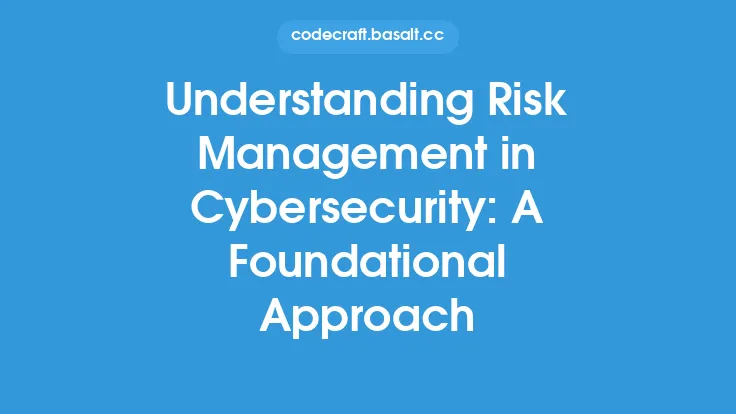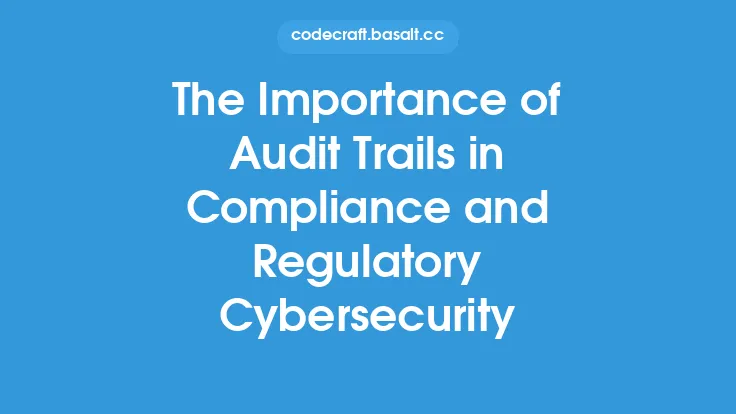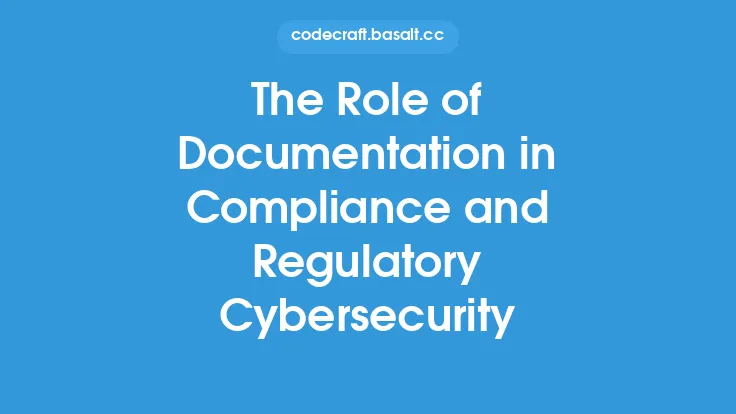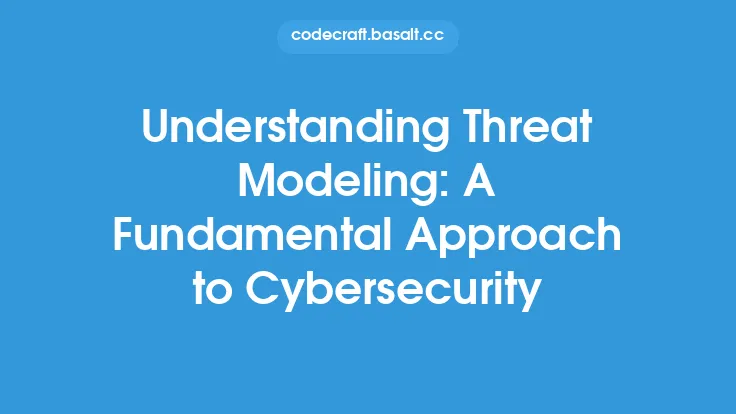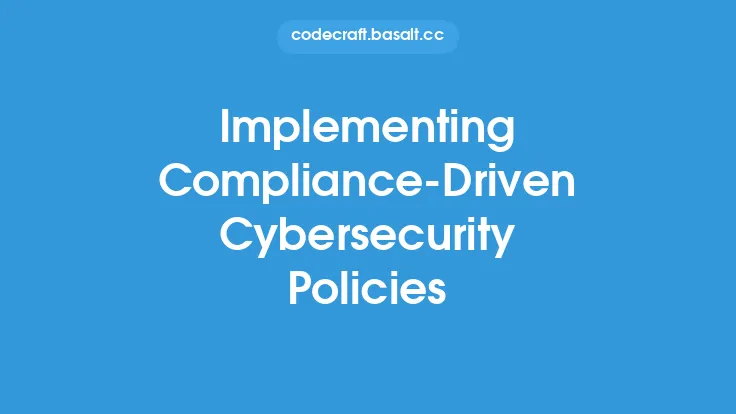In the realm of cybersecurity, compliance frameworks play a crucial role in ensuring that organizations adhere to a set of standards and regulations designed to protect sensitive information and maintain the integrity of their systems. These frameworks provide a structured approach to managing cybersecurity risks, allowing organizations to demonstrate their commitment to security and compliance. At its core, a compliance framework is a set of guidelines, best practices, and standards that organizations can follow to ensure they are meeting the necessary requirements for cybersecurity.
Introduction to Compliance Frameworks
Compliance frameworks are designed to help organizations navigate the complex landscape of cybersecurity regulations and standards. They provide a comprehensive approach to managing cybersecurity risks, including identifying, assessing, and mitigating potential threats. By implementing a compliance framework, organizations can ensure they are meeting the necessary requirements for cybersecurity, reducing the risk of non-compliance and associated penalties. Compliance frameworks can be industry-specific, such as the Payment Card Industry Data Security Standard (PCI DSS) for organizations that handle credit card information, or more general, such as the National Institute of Standards and Technology (NIST) Cybersecurity Framework.
Key Components of Compliance Frameworks
Compliance frameworks typically consist of several key components, including policies, procedures, standards, and guidelines. Policies provide a high-level overview of an organization's approach to cybersecurity, while procedures outline the specific steps that must be taken to implement those policies. Standards and guidelines provide more detailed information on the specific requirements for cybersecurity, such as encryption, access controls, and incident response. Compliance frameworks may also include risk assessment and management components, which help organizations identify and mitigate potential cybersecurity risks.
Types of Compliance Frameworks
There are several types of compliance frameworks, each with its own set of requirements and guidelines. Some of the most common compliance frameworks include:
- NIST Cybersecurity Framework: This framework provides a comprehensive approach to managing cybersecurity risks, including identifying, assessing, and mitigating potential threats.
- PCI DSS: This framework is designed for organizations that handle credit card information and provides a set of standards and guidelines for protecting sensitive cardholder data.
- HIPAA: This framework is designed for organizations in the healthcare industry and provides a set of standards and guidelines for protecting sensitive patient data.
- ISO 27001: This framework provides a comprehensive approach to managing information security risks, including identifying, assessing, and mitigating potential threats.
Implementing a Compliance Framework
Implementing a compliance framework requires a significant amount of planning, resources, and effort. Organizations must first identify the relevant compliance framework for their industry or sector, and then assess their current cybersecurity posture against the requirements of that framework. This may involve conducting a risk assessment, identifying gaps in current policies and procedures, and developing a plan to address those gaps. Organizations must also ensure that they have the necessary resources and budget to implement the compliance framework, including trained personnel, technology, and infrastructure.
Maintaining Compliance
Maintaining compliance with a compliance framework is an ongoing process that requires continuous monitoring and assessment. Organizations must regularly review and update their policies, procedures, and standards to ensure they remain aligned with the requirements of the compliance framework. This may involve conducting regular risk assessments, performing vulnerability scans and penetration testing, and implementing incident response plans. Organizations must also ensure that they are maintaining accurate and detailed records of their compliance activities, including documentation of policies, procedures, and training programs.
Benefits of Compliance Frameworks
Compliance frameworks provide several benefits to organizations, including:
- Reduced risk of non-compliance and associated penalties
- Improved cybersecurity posture and reduced risk of cyber attacks
- Increased confidence and trust among customers, partners, and stakeholders
- Improved incident response and disaster recovery capabilities
- Enhanced reputation and brand image
- Reduced costs associated with non-compliance and cyber attacks
Challenges and Limitations
While compliance frameworks provide several benefits, they also present several challenges and limitations. One of the main challenges is the complexity and cost of implementing and maintaining a compliance framework. Organizations may require significant resources and budget to implement a compliance framework, including trained personnel, technology, and infrastructure. Additionally, compliance frameworks may not be able to keep pace with the rapidly evolving cybersecurity landscape, leaving organizations vulnerable to new and emerging threats. Furthermore, compliance frameworks may not be able to address all aspects of cybersecurity, such as the human factor, which can be a significant weakness in an organization's cybersecurity posture.
Best Practices for Compliance Frameworks
To get the most out of a compliance framework, organizations should follow several best practices, including:
- Regularly review and update policies, procedures, and standards to ensure they remain aligned with the requirements of the compliance framework
- Conduct regular risk assessments and vulnerability scans to identify and mitigate potential cybersecurity risks
- Implement incident response plans and conduct regular training and exercises to ensure readiness
- Maintain accurate and detailed records of compliance activities, including documentation of policies, procedures, and training programs
- Continuously monitor and assess the compliance framework to ensure it remains effective and relevant
- Engage with stakeholders, including customers, partners, and regulators, to ensure transparency and accountability
Conclusion
Compliance frameworks play a critical role in ensuring that organizations adhere to a set of standards and regulations designed to protect sensitive information and maintain the integrity of their systems. By implementing a compliance framework, organizations can demonstrate their commitment to security and compliance, reducing the risk of non-compliance and associated penalties. While compliance frameworks present several challenges and limitations, they provide several benefits, including improved cybersecurity posture, increased confidence and trust, and enhanced reputation and brand image. By following best practices and continuously monitoring and assessing the compliance framework, organizations can ensure they remain compliant and secure in an ever-evolving cybersecurity landscape.
